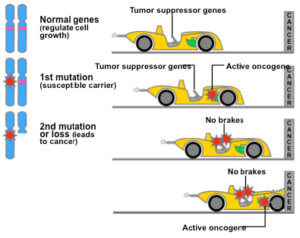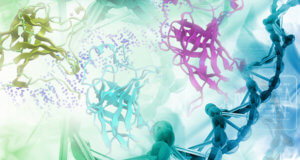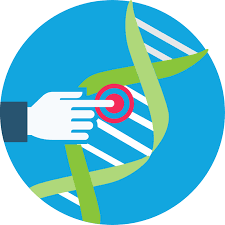A segment of DNA that is involved in producing a polypeptide chain; it can include regions preceding and following the coding DNA as well as introns between the exons; it is considered a unit of heredity. The above definition of a gene though baffling makes us understand the simple fact that genes are proteins that are an integral component of every chromosome in each cell of the body, says Surgical Gastroenterologist Dr. S. Srivatsan.
With this fundamental concept, we now move to the fascinating discussion on the genetics of cancer, and how they play versatile roles in the evolution and progression of various types of cancer.
The etymology of cancer:
Incidentally one would also be interested in knowing the origin of the word cancer which is probably a Latin word that means crab. That’s because cancer adheres to any part that it seizes upon in an obstinate manner like a crab. It could be justifiably argued that the proliferation of literature on the genetic and molecular basis of cancer has outpaced the growth of even the most aggressive malignant tumours! Hence it is easy to get lost in this growing encyclopedia of information on cancer genetics which has prompted us to discuss this captivating topic in a lucid manner that facilitates easy comprehension for our readers.
Also read: Basic facts about breast cancer
Most of us may be aware of the fact that neoplasia (cancer) is due to an abnormal and uncontrolled proliferation of cells in the body.The cell division process is dependent on a tightly controlled sequence of events. These events are dependent on the proper levels of transcription and translation of certain genes.
The role of genes:
When this process does not occur properly, unregulated cell growth may be the end result. Of the 30,000 or so genes that are currently thought to exist in the human genome, there is a small subset that seems to be particularly important in the prevention, development, and progression of cancer. These genes have been found to be either malfunctioning or non-functioning in many different kinds of cancer.
The genes that have been identified to date have been categorized into two broad categories, depending on their normal functions in the cell- those that promote cell division and those that inhibit cell division or lead to cell death. The first group of genes may be normal versions called as proto-oncogenes or may have a defect (mutation) in them and are called oncogenes.
The latter set of genes that inhibit cell division are called as tumour suppressor genes and they play a vital role as checkpoints for cancer growth as we shall see in detail below. Apart from the genes mentioned above, there is another category of genes called DNA repair genes that regulate the repair of damaged DNA and hence play a pertinent role in carcinogenesis (evolution of cancer).
A useful analogy to consider when thinking about tumor suppressors and oncogenes as an automobile. The proto-oncogenes would be in control of the movement of a car (the accelerator). When everything is functioning properly, the car moves only when the accelarator is pushed. In normal cells, both internal and external signals control the activity of the oncogenes.
A defective oncogene would be analogous to an accelerator that is stuck in the ‘on’ position. There is no longer a need for signals to activate these genes. The car would go forward relentlessly! What this means for cells is that they divide continuously even in the absence of any signals telling them to divide. We have two copies of each gene and for oncogenes, a single defective copy is enough to cause a cell to divide.

Pic courtesy: cisncancer.org
Continuing with the analogy, tumor suppressors can be likened to the brake system in a car. If you think of each copy of any tumor suppressor gene as contributing some ‘braking power’ to the cell, then the analogy is reasonably good. When both copies of a tumor suppressor gene are functioning, the cell can stop dividing (the car can stop moving).
A single defective tumor suppressor will still leave the cell with one functioning copy. It would be like stopping a car with only the rear or front brakes instead of both. It may not work quite as well, but it still works! The cells with a single defective version of a tumor suppressor can still control their cell division. When the second copy in the cell is lost, the cell loses the ability to prevent division.
All cancers demonstrate alterations in one or more tumor suppressors and oncogenes. In normal cells, these two groups of proteins work together to regulate cell division but in cancer cells the controls are no longer functioning properly.
Genetics & proto-oncogenes:
Numerous genes have been identified as proto-oncogenes. Many of these genes are responsible for providing the positive signals that lead to cell division. As stated previously, the defective versions of these genes, known as oncogenes, can cause a cell to divide in an unregulated manner. This growth can occur in the absence of normal pro-growth signals such as those provided by growth factors. A key feature of oncogene activity is that a single altered copy leads to unregulated growth. This is in contrast with tumor suppressor genes which must BOTH be defective to lead to abnormal cell division.
Also read: How prostate cancer can be won over
The proto-oncogenes that have been identified so far have many different functions in the cell. Despite the differences in their normal roles, these genes all contribute to unregulated cell division if they are present in a mutant (oncogenic) form. The mutant proteins often retain some of their capabilities but are no longer sensitive to the controls that regulate the normal form of the protein. Some of the examples of oncogenes include her-2 neu, ras, myc, src.
HER-2/neu (also called erbB-2) is the gene that encodes for the human epidermal growth factor receptor type 2. This receptor is found in moderate levels on some normal cells and as the name implies, it is involved in cellular responses to growth factors. Binding of the factor under the right conditions can stimulate cell division.
The HER-2/neu gene is amplified in up to 30% of human breast cancers. The increase in the number of copies of the HER-2/neu gene leads to an increase in the expression of the HER2 protein on the cell surface, and is thought to lead to an increase in cell proliferation. Overexpression of this gene may make a tumor more aggressive, and hence specific chemotherapeutic drugs have been discovered for breast cancer that act on this set of genes alone. Similarly, mutant (defective) ras has been identified in cancers of many different origins, including: pancreas (90%), colon (50%), lung (30%), thyroid (50%), bladder (6%), ovarian (15%), breast, skin, liver, kidney, and some leukemias. The oncogene bcl-2 plays a critical role in preventing apoptosis.
What is apoptosis?
Apoptosis is technically described as programmed cell death. Since Bcl-2 works to prevent apoptosis, its overexpression can prevent apoptosis in cells that are damaged. This can lead to the continued division of the mutated (damaged) cell lines and eventually cancer. Therefore, newer chemotherapeutic drugs are being developed that will down-regulate Bcl-2 (indirectly reduce the amount of Bcl-2 protein) and allow other anti-cancer drugs to work more efficiently.
Tumor suppressors are genes whose products act to control cell division. They differ from oncogenes in that tumor suppressors produce products that inhibit the division of cells if conditions for growth are not met. A key to understanding tumor supppressors is that it is the loss of function of these genes that leads to problems. This is in contrast to oncogenes which often have gained functions (or lost the ability to be controlled) in their mutant form. Some examples of tumour suppressor genes include p53, Rb, BRCA and APC.
The P53 gene:

Pic courtesy: thetruthaboutcancer.com
The p53 gene was discovered in 1979 and has emerged as one of the most important cancer-related genes to date. The gene is located on chromosome 17. The p53 protein interacts directly with DNA. It also interacts with other proteins that direct cell division. When DNA damage or other cellular insults are detected, p53 has the power to trigger cell death or apoptosis. The crucial role of p53 in maintaining proper control of cellular processes is underscored by the fact that the p53 gene is found to be defective in about half of all tumors, regardless of their type or origin. Hence this p53 gene is appropriately called the “guardian of genome”.
The mutation of the p53 gene is one of the most frequent genetic changes seen in cancer cells. In addition to mutations (defects in the DNA) that arise during the growth and development of individuals (sporadic mutations), there are forms of cancer associated with the inheritance of a damaged version of p53. One such syndrome, the Li-Fraumeni cancer family syndrome, is associated with a wide variety of cancers including breast, bowel and brain tumours.
Also read: Read all about Precision Diabetes
Though p53 may be regarded as the guardian of genome Rb gene was the first tumour suppressor gene discovered. The Rb gene is mutated in many types of cancer. One of the best studied is retinoblastoma, a cancer of the eye from which the gene got its name. The disease is often found in young children. Individuals with the inherited form of the disease often suffer from many different cancerous growths, especially osteosarcomas. Other types of cancer associated with Rb mutation include lung, breast, and bladder carcinomas.
Mutations of the APC gene:
Mutations of the APC (adenomatous polyposis coli) gene are strongly associated with both inherited and sporadic cases of colon cancer. Most cases of colon cancer are thought to develop slowly over a period of several years. Inactivation of the APC gene, located on chromosome 5, is thought to lead to increased cell proliferation and contribute to the formation of colonic polyps. Several genetic alterations must occur during the conversion of normal colon cells into cells capable of forming tumors.

Pic courtesy: mysupport360.com
In many cases mutation of the APC gene is thought to be one of the first steps. Evidence for this can be seen indirectly by examining individuals who have inherited a mutation in one of their APC genes. These patients have a disease called familial adenomatous polyposis, a condition in which the colon is filled with polyps. Every polyp has the potential to develop into cancer, therefore those with the inherited mutation are at a much higher risk for cancer. Similarly, mutation in the BRCA gene has been associated with breast, ovarian and colonic malignancies.
With the above discussion, we have managed a brief insight into this enthralling world of cancer genetics. After reading this if the reader begins to understand why certain individuals and certain families seem to have a higher risk of developing cancer than others and if they could correlate this to small segments of the defective protein in the chromosome called “mutant genes” then this article would have served its purpose.
Also read: Surgical management of Breast Cancer
